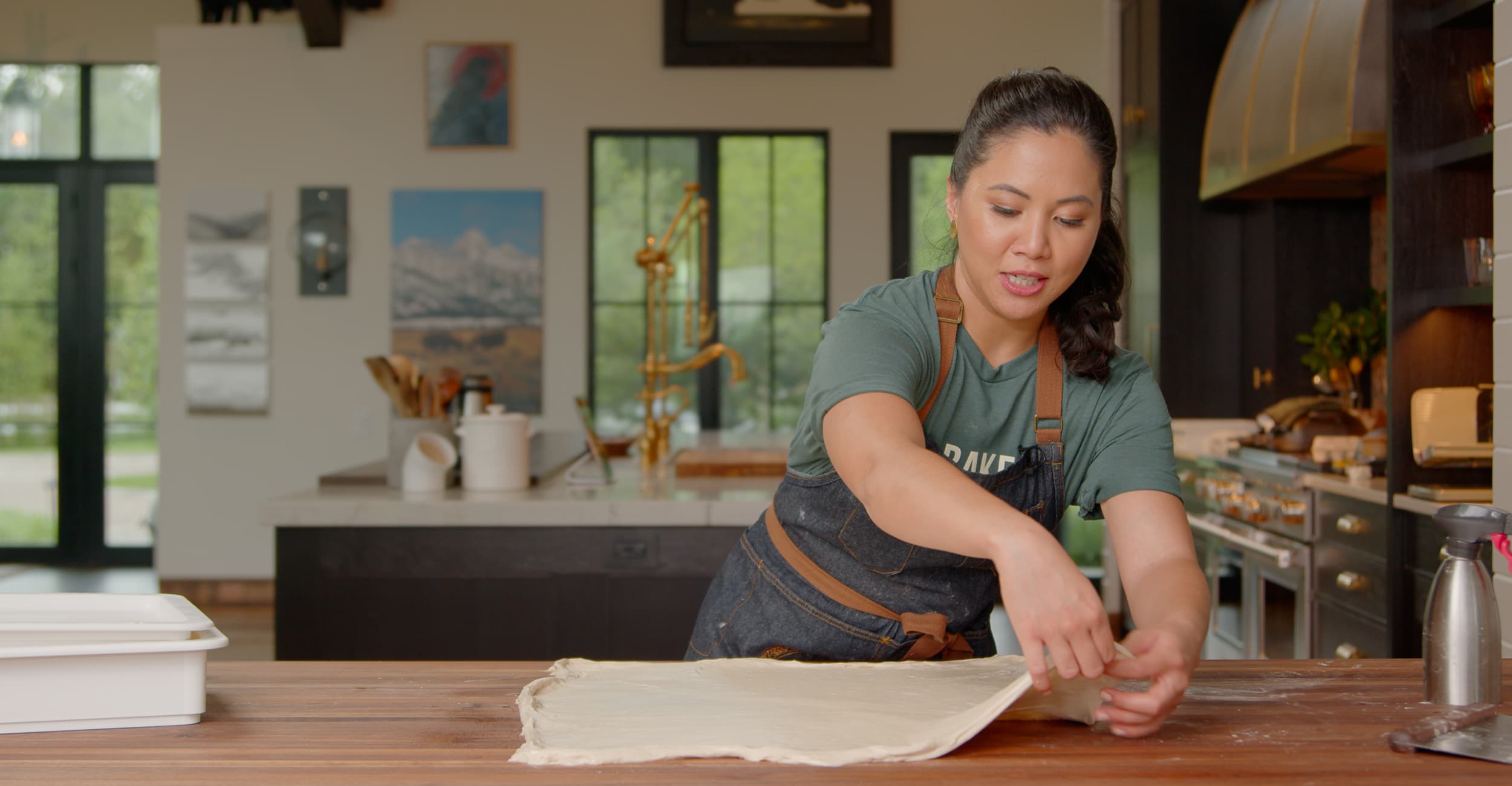
When it comes to forming strong gluten in your dough, the lamination method is a great strength building technique to try. Not only does it help develop strong gluten in the dough, but it also helps to even out the crumb structure of the final loaf
Please email us at techniques@challengerbreadware.com with your comments and questions.
The lamination method is used in several ways when it comes to baking (see our article on how to laminate inclusions into your dough). Aside from being a way to add flavors to your dough, it’s also a way to test and build its gluten strength.
Start by wetting your work surface with a spray bottle filled with water. This will prevent the dough from sticking to it. Turn the dough out onto the damp surface, and gently spread it out as thinly and evenly as possible into one large rectangle. The goal is to be able to see your hand through the dough without it tearing; this is a sign that your gluten is strong enough to provide good structure for your bread, and is very similar to performing a windowpane test. Be gentle when stretching your dough so that you do not tear it.

Once your dough is stretched into a thin rectangle, begin carefully folding it as consistently and symmetrically as possible. This creates the lamination, or layering in the dough. Laminating your dough helps determine the final structure of your crumb, so it is important to take care during the folding step to do it evenly.

Finish the folding by performing one coil fold to smooth out the top, place back into your proofing box, and continue with bulk fermentation.
US$56.00
US$30.00